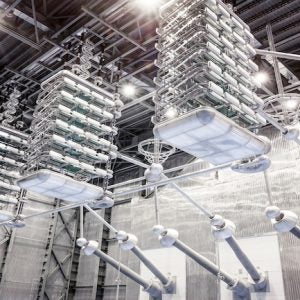 Completion of the first full sized small modular reactor (SMR) nuclear vessel demonstrator assembly at Sheffield Forgemasters has signalled what the company believes is a global leap in nuclear welding technology.
Completion of the first full sized small modular reactor (SMR) nuclear vessel demonstrator assembly at Sheffield Forgemasters has signalled what the company believes is a global leap in nuclear welding technology.
Sheffield Forgemasters has pioneered the industrialisation of Local Electron-Beam Welding, and complete weld-assembly of the vessel marks a pivotal moment in the development of this technology, which allowed the creation of four, thick, nuclear-grade welds in less than 24 hours, completing in one day what would typically require a year of work.
With the challenge of vessel diameter of three metres and a wall thickness of 200 mm, its construction showcases the reliability and capabilities of LEBW, says Sheffield Forgemasters, setting a new standard for weld-joining thick walled components, previously untrialled in a demonstrator model.
Professor Jesus Talamantes-Silva, Research, Design and Technology director at Sheffield Forgemasters, said: “We are delighted to have reached a significant milestone in assembling a nuclear vessel demonstrator, using electron beam welding for the first time at this scale, with 100 % success and no defects.”
Sheffield Forgemasters deployed specially developed methods, meticulously fine-tuned during the welding development stage, including innovative sloping-in and sloping-out techniques to start and finish the weld, ensuring a clean and complete weld-join.
It is the only company in the UK with the capability to manufacture the large forgings required for SMRs, and it now has years of developmental lead on global competitors in welding thick-walled assemblies.
Dr Michael Blackmore, Senior Development Engineer and Project lead, commented: “The implication of this technology within the nuclear industry is monumental, potentially taking high cost welding processes out of the equation. Not only does this reduce the need for weld-inspections, because the weld-join replicates the parent material, but it could also dramatically speed up the roll-out of SMR reactors across the UK and beyond … that is how disruptive the LEBW breakthrough is.”
Future company activities include an upcoming joint industrial project supported by key participants from the USA and UK. The objective is to initiate a code case or multiple cases to facilitate the deployment of this technology in accordance with the standards set by the American Society of Mechanical Engineers (ASME).






